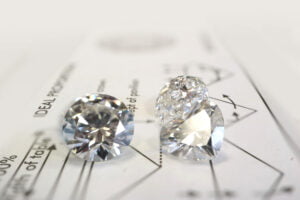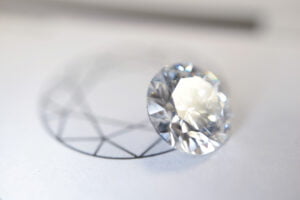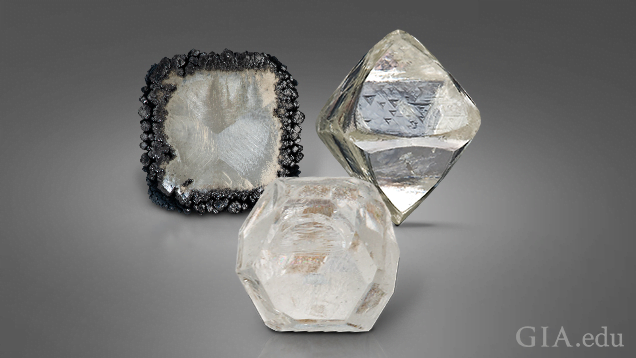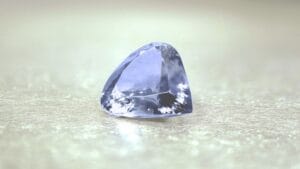One of the first things most people learn about diamonds is that not all diamonds are created equal. In fact, every diamond is unique. Diamonds come in many sizes, shapes, colours, and with various internal characteristics.
All polished diamonds are valuable. That value is based on a combination of factors. Rarity is one of those factors. Diamonds with certain qualities are more rare—and more valuable—than diamonds that lack them. Being natural in terms of being a natural diamond is more valuable than a manmade diamond as natural diamonds are limited and considered rare.
Diamond – the material, not the gem – is a mineral consisting of “essentially pure carbon crystalized in the isometric cubic system,” according to the U.S. Federal Trade Commission (FTC), which develops trading guides for the gem and jewellery industry.
Although the FTC says diamonds are essentially pure carbon, the vast majority of natural diamonds contain trace amounts of other substances, particularly nitrogen, which gives them a yellow colour or (rarely) boron, which imparts a blue colour. In addition, they usually contain inclusions, tiny bits of foreign material that were trapped in the still-forming diamond millions of years ago.
Laboratory-grown diamonds (also sometimes referred to as man-made or synthetic diamonds) entered the gem and jewellery market in commercial quantities about five years ago. Although identical in appearance to natural diamonds, they have very subtle differences that can only be detected by trained gemmologists and sophisticated equipment designed for that purpose.
Natural Diamonds
Natural diamonds formed deep in the earth under extreme pressure and high temperature as long as three billion years ago. Volcanic ac tivity brought them to the surface where they lay in a type of volcanic rock formation known as kimberlite pipes, waiting to be mined. Only about five percent of kimberlite pipes contain enough diamond to make them economically feasible to mine.
tivity brought them to the surface where they lay in a type of volcanic rock formation known as kimberlite pipes, waiting to be mined. Only about five percent of kimberlite pipes contain enough diamond to make them economically feasible to mine.
Laboratory-Grown Diamonds
Man-made diamonds suitable for industrial use were first produced in a laboratory in the 1950s. While gem-quality diamonds were produced in a laboratory for the first time in 1971, it was not until the mid-2010s that colourless laboratory-grown diamonds entered the gem and jewellery market in commercial quantities.
Today, laboratory-grown diamonds are created by two methods, according to Dr. James Shigley, GIA Distinguished Research Fellow, who has been researching laboratory-grown diamonds at GIA for more than 30 years.
High pressure, high temperature (HPHT) diamonds are produced in a laboratory by mimicking the high pressure, high temperature conditions that form natural diamonds in the Earth. This process produces a distinctively shaped laboratory-grown diamond crystal.
The chemical vapor deposition (CVD) method involves breaking down the molecules of a carbon-rich gas, such as methane, into carbon and hydrogen atoms, which then are deposited on diamond seeds to produce a square-shaped, tabular diamond crystal.
Growing diamonds by either method typically requires less than a month for most sizes. Most CVD-grown diamonds require additional treatments like heat or irradiation to enhance or change their colours after the growth process.
Article taken from GIA Is There a Difference Between Natural and Laboratory-Grown Diamonds? (gia.edu)
The Diamond Works only deals with natural diamonds. Focused on quality and premium stones remains our focus.
Remain educated and ask vital questions when looking to invest in diamonds.



